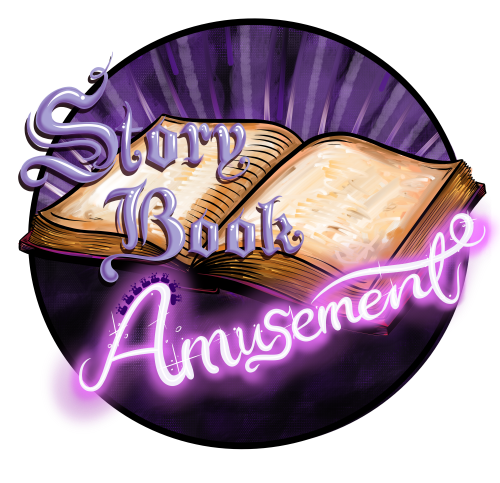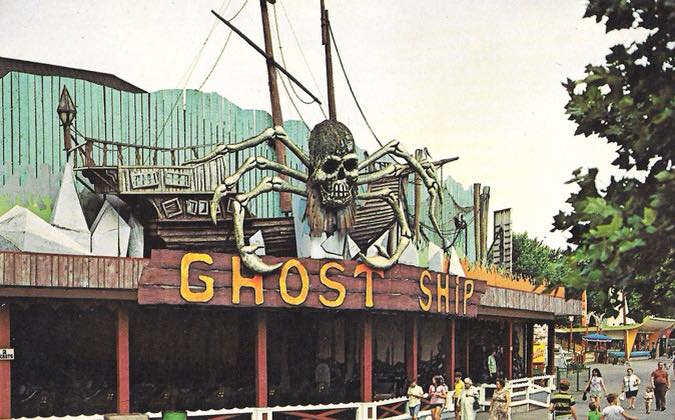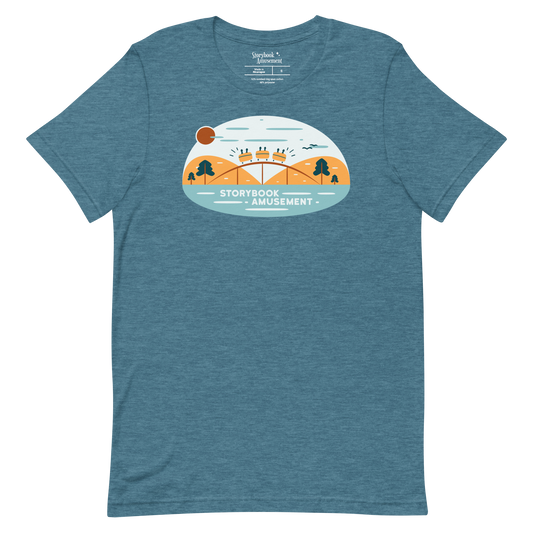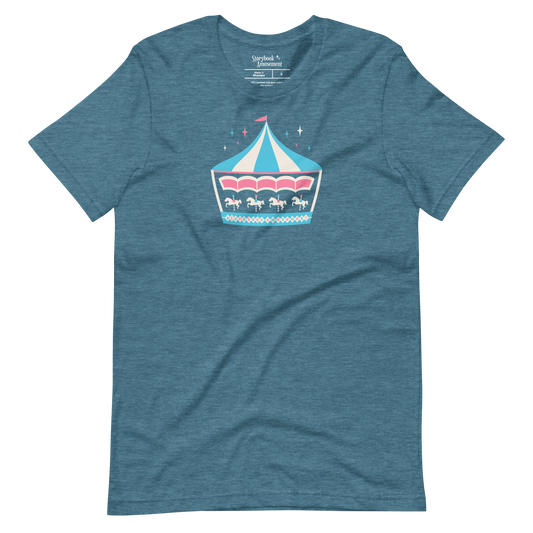Kennywood's Beginnings
In the early 19th century, Charles Kenny purchased a riverside property in the Pittsburgh area to mine coal, using the site’s adjoining river to ship goods. The land, decades later, evolved into a popular picnic park and eventually into a trolley park named Kennywood.
In 1899, the park added a 12,000-square-foot dance hall that hosted notable bands and performers. Meanwhile, Kennywood after the turn of the century was thriving, gaining the park’s earliest roller coasters and attractions. However, as the Great Depression came, the park couldn’t afford to invest in many new attractions. Nevertheless, the success of the dance hall, which eventually doubled as a roller rink in the winter, is what kept the park open through those difficult years.
Watch on YouTube
This article is available in video form with accompanying visuals. Click HERE to watch it.
New Attractions in the Dance Hall
By the mid-‘50s, swing music was in decline, and television was on the rise, keeping people from going out as often. Over time, Kennywood’s dance hall had grown out of fashion, and the park had decided to retire the dance hall building and convert it into a new walkthrough attraction called the Enchanted Forest. It had a newly themed facade, and inside, the fun-house-style attraction put patrons, typically younger kids, through a storybook setting of a small forest with scenes from fairy tales.
Into the ‘60s, the walkthrough attraction was rethemed to the Enchanted Castle, carrying a darker tone with updated, eerie sets and the addition of a dungeon scene.
Dark Rides Installed in the Dance Hall
Over in New York City, the short-lived Freedomland U.S.A. theme park had filed for Chapter 11 bankruptcy and closed permanently. The park sold off many assets, including an attraction called Tornado, which the owners sold to Kennywood in Pittsburgh. The relocated ride took over Kennywood’s old dance hall building. When the venue housed the previous Enchanted Forest and Enchanted Castle walkthrough attractions, the hardwood floor was covered up for protection in case the dance hall were ever to return. With the acquisition of the new Tornado ride, Kennywood committed the building to the attraction by carving into the hardwood floor to provide clearance for the ride track.
The new ride, Tornado, opened in 1963. Tornado was a dark ride manufactured by Arrow Development Company, a group known for its early Disneyland attractions. Tornado’s well-themed, barn-style facade set up the attraction’s story that put guests in vintage cars and through a Midwestern town being consumed a tornado. The sets were themed to the twister’s wreckage, with various livestock overhead and high winds generated by fans blowing on riders throughout the attraction.
Although Tornado was a popular attraction, park management decided that the large dance hall venue would be better suited with a custom attraction to make the most of the space instead of the current relocated dark ride that came from a failed theme park. Tornado, which closed in 1966, lasted four short years in the park before being sold to New York’s Great Escape theme park.
Kennywood had big plans to fill the old dance hall venue for its next operating season.
Park president Carl Henninger had an idea to repurpose the track and ride vehicles from the park’s retired Laff in the Dark attraction to use for a future ride. They got to work bending the metal track to fit a new ride layout inside the old dance hall venue. Kennywood partnered with Amusement Display Associates to co-develop a new dark ride. The company was headed by industry legend Bill Tracy who creatively collaborated with Kennywood’s park management to come up with the park’s next major attraction.
Ghost Ship Opens
The theme park landscape in 1967 was swelling to a high tide. Disneyland debuted its newest boat ride, Pirates of the Caribbean, and Kennywood likewise introduced a major addition: Ghost Ship.
The same venue that hosted big bands and memorable acts now was occupied by an unforgettable attraction. The building was decorated with an imposing facade featuring a shipwreck overtaken by a pirate skull that tilted back and forth with monstrous crab legs below. After queuing back and forth, guests boarded in two- or three-passenger ride vehicles themed to small ships.
Ghost Ship started by jerking forward and taking a sharp right turn as the ride vehicle crashed into a set of doors that led into the attraction. Guests couldn’t see much once inside the pitch-black Ghost Ship, but they heard a loud rattle throughout, caused by the attraction’s 30-year-old chain-driven motor.
The ride experience featured many scenes and illusions including long disorienting caverns, winding hallways, rotating vortex barrels, and rocking sets to simulate the feeling of being on a boat. Exploring the ship, the ride encountered various skeletons, ghouls, and pirates until making its way to the deck. There, riders faced the destruction of a sea monster’s tentacles that forced them to an “underwater” section with clever lighting effects and the surrounding sounds of bubbles. On the ocean floor, riders came across a treasure chest guarded by a sea monster as the ride continued on through different illusions.
The ride ended with a waterfall effect that stopped its flow as riders passed through.
The nearly two-minute ride instantly earned a reputation around the park. Ghost Ship would receive a few updates and improvements over the years, becoming among the more beloved and memorable attractions in the park’s history. Kids were terrified of the gloomy dark ride experience, but it was Ghost Ship that had bleak stars ahead.
A Disastrous Demise
June 19, 1975. Kennywood was somewhat busy, hosting a picnic for local schools. Ghost Ship had been operating in the park for nearly a decade and was among Kennywood’s more popular attractions. The dark ride offered relief on hot, sunny days. However, just past noon on that Thursday, that cool indoor getaway quickly became much hotter than a summer afternoon.
Kennywood’s assistant general manager, making his way across the park, noticed smoke coming from behind the Ghost Ship venue. As one ride vehicle came to the unload station, a guest got off and told the attraction’s manager they smelled smoke.
Ghost Ship was on fire with riders inside.
The 75-year-old wooden venue was filled with flammable amusement props and false ceilings that easily went up in flames. Being an older building, the venue did not have an installed sprinkler system to control the fire.
Thankfully, without hesitation, park employees reacted and successfully evacuated the six guests who were inside the attraction. Kennywood’s assistant general manager ran through the burning attraction to ensure no guests were trapped inside. It was clear, but the park still had a critical issue to put out. Kennywood’s 15-man fire brigade responded to the incident, quickly attempting to stop the flames from spreading until local fire departments arrived.
The fire was fierce, affecting adjacent attractions. One Kennywood employee was quoted saying, “It was just unreal; it was hotter than hell.” The thick, black smoke was said to have been seen for miles.
Fire crews poured streams of water on the hungry fire, but they needed more help. With so many firefighters on the scene, they didn’t have enough nearby fire hydrants for everyone. The firefighters resourcefully started to suction water from the park’s lagoon through their hoses to overwhelm the growing fire. With that area of the park roped off, Kennywood remained open during the incident as about 2,000 guests watched and many rides were still operating.
The circumstances intensified with high temperatures from the fire, causing one firefighter to collapse. Some Kennywood employees offered support by serving the firefighters donuts, soda, and ice water, while some younger employees manned hoses to help.
Crews extinguished the fire completely about two and a half hours after the first signs of smoke. No reported injuries occurred aside from a firefighter being treated for smoke inhalation.
The historic dance hall venue, however, was devastated. All that remained was a smoldering pile of ashes and the building’s decimated remains. Over half a century of spectacular memories went up in flames. A legacy of music, dancing, skating, laughter, and beloved attractions were gone.
The fire was likely caused due to an electrical short in the historic building’s wiring. Regardless of how it started, the fire caused about $400,000, or about $2 million by today’s standards, worth of destruction and damage, including a few nearby attractions, but the park was already looking forward to the future.
A Quick Turnaround
The very next day, maintenance crews were swift to clean up the site and repair damaged attractions nearby. The area reopened to guests within days after, almost as if nothing had happened. The area was restored into a grassy green space with nice landscaping.
In the 1976 season, one year after the fire, the former dance hall location served as a plaza for the park’s Kiddieland. As the years passed, a few attractions have operated on the former site of Ghost Ship, though nothing would match the lost dark ride’s scale and popularity. The location is now occupied by a looping swing ride called Aero 360.
While the presence of Ghost Ship faded within moments, its classic spirit and significance linger in a park that operates today as a vast time capsule of theme park history.





